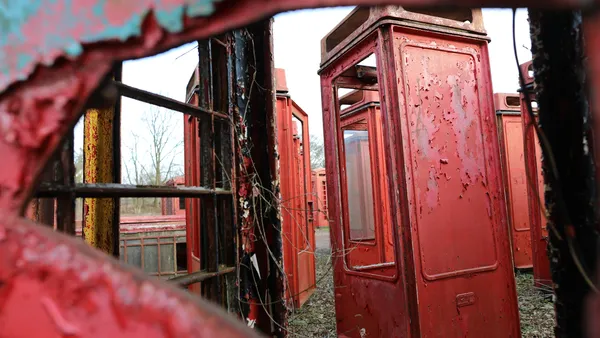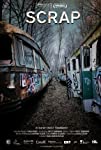Eye For Film >> Movies >> Scrap (2022) Film Review
Scrap
Reviewed by: Jennie Kermode

Before the turn of the millennium, very few people made a serious effort to recycle their waste. These days, you probably have several different coloured bins in your house and at least a vague idea of what happens to their contents after they’re taken away. Questions remain, however. What happens to the big stuff? Cans and bottles are one thing, but what about farm machinery and phone boxes, ships and aeroplanes?
Intrigued by this question, documentarian Stacey Tenenbaum went looking for answers. What she found was not just another story of recycling, but one about the point at which art, repurposing and natural decay meet. This is a film full of fascinating stories which will change the way you relate to ordinary objects. It’s a film which quietly urges viewers to go beyond recycling to repair and reuse, or to take objects which can no longer serve their original purpose and transform them into something new.

It begins, as many good stories do, by transporting us along a path into a mysterious wood, where we find the rusting relics of old cars gradually going back into the soil. This is Old Car City in White, Georgia, looked after by Dean Lewis, who grew up there playing in the wrecks. His parents opened it in 1931, selling spare parts to make it through the Great Depression. Now it functions more like a theme park, a place which people visit out of curiosity or nostalgia. Trees have grown through some of the cars, which Dean sees as a kind of found art. Exploring it, one gets the feeling that this is what it might be like to wander through the last remnants of human civilisation.
In a yard in Bangkok, we see half of an airliner, sliced neatly through the middle into a hollow tube. Other such slices lie nearby. Fah Boonsoong and her children live in one of them and charge foreign tourists for guided tours of the others. They have no idea why the tourists want to see them, but it’s a living. Stripped of their fittings, the planes become tunnels, weirdly echoing, still glossy white on the outside but rusting within. Because of them, Fah’s children can go to school.
There is more like this. In Spain, we tour old ships once used for cruises or the transport of freight – vessels which were made to last 40 or 50 years and are now being slowly carved up. Pieces of them are incorporated into architectural wonders, in which form they could last for a thousand years. Out of the US prairies, old farm equipment, each piece representing a substantial investment for its owner in years gone by but now no longer fit for purpose, is transformed into sculpture. A great iron buffalo speaks to the herds which once roamed this land. A tiger, being transported on a truck, is so well constructed that at a distance its silhouette might pass for the real thing.
These intriguing and romantic tales are not left to stand alone. People who work on reclamation get to have their say, and challenge prevailing attitudes. In an Indian factory where women work to recover material from old electronic goods, conditions are poor but attitudes are enthusiastic. As far as they are concerned, this is good work. They are personally better off, they are doing something useful, and during a Hindu festival they offer worship to the machines which have provided them with this livelihood.
Some items are not broken down at all but patched up to live new lives in altered circumstances. Old streetcars can be refitted to add historic charm (and relatively eco-friendly transport) to city streets. All sorts of uses are found for classic red telephone boxes. As we approach a field of them, all neatly aligned, we hear the sound of one ringing, and there is for a moment that dizzying feeling which can come from trying to locate one’s car in a busy car park when one can’t remember exactly where it is.
Today, one participant points out, a lot of new objects look the same. It’s only when they get old and acquire scars that we begin to see their personalities. This remark might take you back to the cars in the wood, whose caretaker says he can see faces in them. In some parts of East Asia, there is a tradition of thinking of old objects as slowly acquiring souls. Scrap invites its viewers to rediscover a love for old things – to end the practice of damaging hyper-consumerism not simply for the sake of the planet, but because there is value in what lasts. It’s a beautiful piece of work, opening up an important conversation whilst reminding us of the pleasure to be found in a renewed appreciation of what lies all around us.
Reviewed on: 09 Apr 2023
















